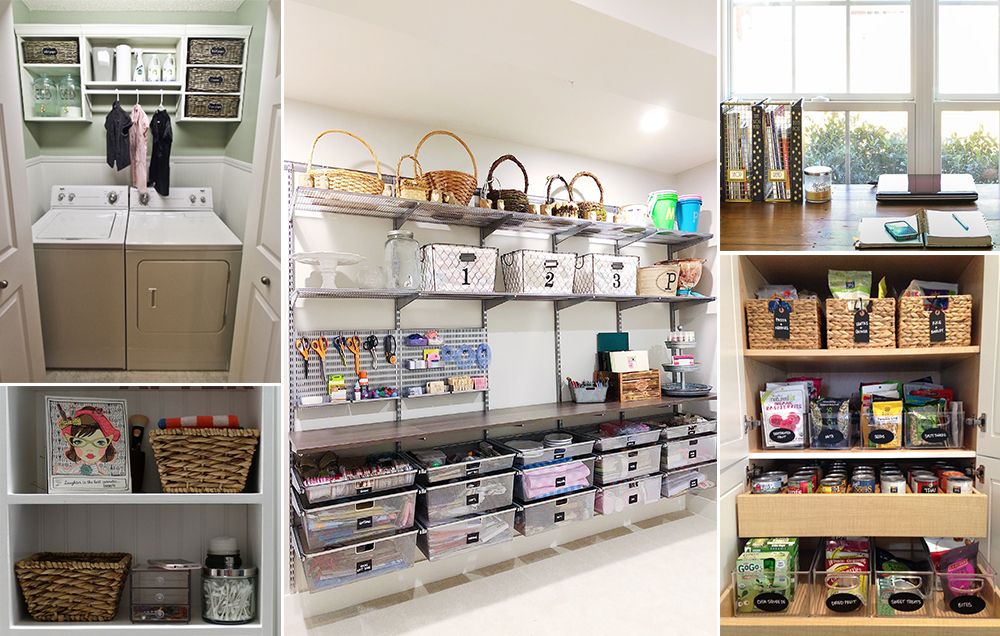Decluttering your home can feel overwhelming, but it doesn’t have to be. With the right approach and easy-to-follow strategies, tidying up can become not only manageable but also enjoyable. A clutter-free environment promotes mental clarity, reduces stress, and makes your space more functional. Whether you’re preparing for a spring clean, moving into a new space, or simply want to regain control over your living area, these tricks will guide you through a seamless decluttering process and help you stay organized in the long term.
Why Decluttering Matters

Before diving into the how it’s essential to understand why decluttering is so crucial for your wellbeing and daily life. The state of your environment can significantly impact your mental health, productivity, and overall happiness. Research suggests that a cluttered home can lead to feelings of anxiety, stress, and overwhelm. When your space is disorganized, it becomes difficult to focus on daily tasks, let alone find time to relax. A decluttered home creates an environment that fosters calmness, creativity, and productivity.
Moreover, organizing your space saves time. No more endless searches for misplaced items or sifting through piles of stuff. A home that’s organized means you can easily locate whatever you need when you need it.
Step-by-Step Guide to Decluttering Your Home
1. Start Small and Set Clear Goals
The biggest mistake people make when trying to declutter is tackling too much at once. The key is to start small and focus on one area at a time. Begin with a single room, drawer, or closet. Setting realistic and clear goals will help keep you motivated throughout the process.
For instance, instead of saying, “I want to declutter the whole house,” try setting smaller goals like, “I will organize the kitchen pantry today.” Achieving these mini-goals gives you a sense of accomplishment and propels you forward.
Pro Tip: Start with spaces you use daily, such as your kitchen, bathroom, or entryway. Decluttering these areas first will give you a quick win and improve your daily routines.
2. The Four-Box Method
A highly effective decluttering technique is the four-box method. This method involves categorizing items into four boxes:
- Keep (items that are essential or spark joy)
- Donate (items in good condition that you no longer need)
- Sell (items worth selling online or at a garage sale)
- Trash (items that are broken or have no use)
When you go through each room, decide which box each item fits into. This technique forces you to make deliberate decisions about what to keep and what to let go of, helping you quickly clear out the clutter.
Pro Tip: Set a time limit for each room. For example, spend 20 minutes in your living room and 30 minutes in your bedroom. This prevents overwhelm and keeps you on track.
3. Focus on Decluttering, Not Just Organizing
Many people mistake organizing for decluttering. While organization is essential, it won’t solve the problem of excess stuff. Decluttering means getting rid of things you no longer need or want. The more items you purge, the easier it will be to organize what’s left.
Instead of purchasing storage bins and organizers right away, start by clearing out what you don’t need. Once you’ve eliminated unnecessary items, you can then focus on finding efficient storage solutions for what remains.
4. Declutter by Category, Not Room
One helpful decluttering strategy is to tackle items by category instead of room. For example, instead of decluttering your bedroom closet one day and your hall closet another, focus on all clothing in the house at once. This approach allows you to see the volume of similar items you own, making it easier to decide what to keep and what to discard.
Common categories include:
- Clothing
- Books
- Papers
- Kitchenware
- Sentimental items
Pro Tip: When decluttering clothes, try the KonMari Method. Lay all your clothes in one pile and sort through them, asking yourself if each item “sparks joy.” If it doesn’t, it’s time to let it go.

5. Keep Flat Surfaces Clear
Flat surfaces like countertops, tables, and shelves tend to accumulate clutter quickly. Commit to keeping these areas clear. Adopt the rule that nothing is allowed on flat surfaces unless it serves a purpose, like a lamp on a nightstand or a bowl of fruit on the kitchen counter. By minimizing what you place on these surfaces, your space will instantly feel more organized and spacious.
6. Embrace the One In, One Out Rule
To prevent clutter from piling up again, adopt the “one in, one out” rule. For every new item you bring into your home, one must go. This applies to everything—clothes, kitchen gadgets, toys, and even decor. This rule helps maintain a balance and ensures that you don’t accumulate more than you can manage.
Pro Tip: Whenever you purchase a new piece of clothing, donate or sell an old one. This simple trick will keep your wardrobe lean and clutter-free.
Room-by-Room Decluttering Tips
1. Decluttering the Living Room
The living room is one of the most frequently used spaces in a home. To keep it tidy:
- Minimize decor: Limit decorative items on surfaces like coffee tables and shelves. Choose a few meaningful pieces instead of overcrowding the room with knickknacks.
- Consolidate electronics: Bundle remotes, chargers, and other gadgets in a single storage container. Keep cords organized with cable ties or a designated charging station.
- Control clutter hot spots: Areas like the coffee table or end table tend to attract clutter. Clear these surfaces daily and only keep essential items on them.
2. Decluttering the Kitchen
Kitchens are notorious for accumulating clutter. Follow these tips to keep it organized:
- Purge unused appliances and gadgets: If you haven’t used that blender in over a year, it’s time to let it go.
- Streamline your pantry: Use clear containers for items like flour, sugar, and pasta to make your pantry visually pleasing and easy to manage. Label everything for quick access.
- Limit countertop items: Keep only frequently used appliances on your countertops. Store less-used items in cabinets to create a cleaner look.
Healthy Eating on a Budget: Tips and Tricks for Affordable Meal Planning
3. Decluttering the Bedroom
Your bedroom should be a sanctuary. To keep it peaceful and clutter-free:
- Use under-the-bed storage: Store seasonal clothing, extra bedding, or shoes in bins that fit under your bed.
- Sort through your wardrobe regularly: Every season, reassess your clothing and donate items you no longer wear.
- Limit decor: A few key pieces of art or decor will keep the space calm and uncluttered.
4. Decluttering the Bathroom
The bathroom can quickly become cluttered with toiletries, makeup, and towels. To stay organized:
- Streamline products: Toss out expired or unused beauty products. Keep only your daily essentials out on the counter.
- Use baskets and bins: Store towels, toilet paper, and cleaning supplies in labelled bins to keep your bathroom tidy.
- Maximize vertical space: Install shelves or use over-the-door storage for items like towels and extra toiletries.
5. Decluttering the Entryway
The entryway is often the first place where clutter accumulates. To keep it neat:
- Install hooks or a coat rack: Instead of letting coats pile up on chairs, hang them immediately upon entering the house.
- Create a drop zone: Designate a space for keys, bags, and shoes to avoid cluttering the floor.
- Limit decor: Keep the entryway functional with just a few pieces of decor to prevent it from feeling cramped.
Tips for Staying Organized Long-Term
1. Daily Maintenance
The best way to prevent clutter from building up again is to make decluttering a daily habit. Spend just 10-15 minutes each day tidying up high-traffic areas like the kitchen, living room, and entryway. This consistent effort will make it easier to maintain a clutter-free environment.
2. Create a System for Paperwork
Paper clutter is one of the most common sources of mess. Create a system to deal with mail, bills, and other paperwork. Use folders, baskets, or filing cabinets to organize important documents and shred anything unnecessary immediately.
3. Practice Mindful Shopping
One of the best ways to keep your home clutter-free is to prevent excess from entering in the first place. Practice mindful shopping by only purchasing items you truly need or love. Avoid impulse buying, and always ask yourself if you have space for the item before bringing it home.
4. Schedule Regular Decluttering Sessions
Productivity Hacks for Busy People: How to Get More Done in Less Time
To ensure your home stays organized, schedule regular decluttering sessions. These can be monthly or seasonal, depending on your needs. Use this time to reassess your belongings and get rid of anything that no longer serves a purpose.
5. Involve the Whole Family
If you live with family or roommates, make decluttering a group effort. Teach everyone the importance of maintaining a tidy environment and assign specific decluttering tasks to each person. This will distribute the workload and help everyone take ownership of the space.
Decluttering your home doesn’t have to be a daunting task. By starting small, focusing on key areas, and using practical strategies like the four-box method and the one-in, one-out rule, you can transform your home into an organized, peaceful haven. Remember, decluttering is an ongoing process, and with daily maintenance and mindful habits, you can keep your home tidy and organized for years to come.
Embrace the joy of living in a clutter-free space and enjoy the mental and physical benefits that come with it!




